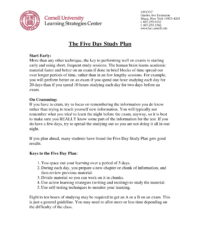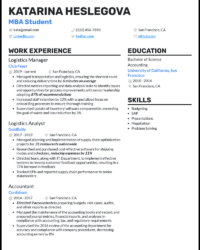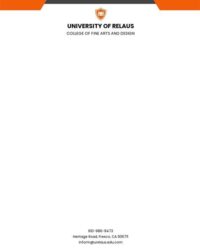Utilizing such a framework can significantly enhance application strength. It offers a professional presentation, saves time and effort, and ensures consistency across multiple applications. A well-structured presentation can make a positive impression, increasing the likelihood of securing admission to desired programs.
This structured approach to application development encompasses crucial elements such as formatting best practices, content optimization strategies, and tailoring the presentation to specific university requirements. These topics will be explored in detail to provide applicants with the tools they need to create compelling and successful applications.
Key Components of a Strong Application Document
Effective application documents for university admission require careful consideration of several key components. These components work together to present a comprehensive and compelling picture of an applicant’s qualifications.
1. Contact Information: Accurate and up-to-date contact details, including full name, phone number, email address, and mailing address, are essential for effective communication.
2. Educational Background: A clear chronological listing of schools attended, including dates of attendance, degrees earned, majors/minors, GPA, and relevant coursework, provides a concise academic history.
3. Experiences: This section details relevant work experience, internships, volunteer activities, and extracurricular involvement. Emphasis should be placed on responsibilities, accomplishments, and skills gained.
4. Skills: Listing technical skills (e.g., programming languages, software proficiency), language proficiency, and other relevant abilities strengthens an application by showcasing specific competencies.
5. Awards and Honors: Academic achievements, scholarships, and other recognitions demonstrate excellence and commitment to a field of study.
6. References: Providing contact information for individuals who can attest to an applicant’s character and qualifications is crucial. Obtain permission before listing references.
A well-crafted application document synthesizes these components to create a clear and compelling narrative of academic achievement, relevant experience, and future potential. Each component plays a vital role in presenting a strong case for admission to a competitive university program.
How to Create a Strong Application Document
Creating a compelling application document requires careful planning and execution. The following steps outline a structured approach to developing a document that effectively showcases qualifications and potential.
1. Choose a Suitable Template: Selecting a professional template ensures a clean, organized presentation. Consider templates specifically designed for academic applications, focusing on clarity and readability.
2. Tailor Content to the Institution: Research specific program requirements and tailor the document accordingly. Highlight experiences and skills relevant to the chosen field of study.
3. Prioritize Relevant Information: Place the most impactful information prominently. Academic achievements, relevant experience, and key skills should be readily apparent.
4. Quantify Accomplishments: Whenever possible, quantify accomplishments with specific metrics. For example, instead of stating “improved efficiency,” provide quantifiable results such as “increased efficiency by 15%.”
5. Proofread Thoroughly: Errors in grammar and spelling can detract from a strong application. Meticulous proofreading is essential to ensure a polished and professional presentation.
6. Seek Feedback: Request feedback from trusted mentors, teachers, or advisors. An external perspective can identify areas for improvement and ensure clarity and effectiveness.
7. Maintain Consistent Formatting: Consistent font choices, spacing, and heading styles create a professional and visually appealing document. Adhere to standard formatting conventions.
A well-structured application document, tailored to specific program requirements and thoroughly reviewed, provides a compelling narrative of qualifications and potential, significantly enhancing application success.
A well-crafted framework for presenting qualifications to universities is essential for competitive applications. Strategic use of such a framework enables applicants to effectively highlight academic achievements, experiences, and skills, creating a compelling narrative that resonates with admissions committees. Careful attention to content, formatting, and tailoring to specific program requirements maximizes the impact of an application.
Investing time and effort in developing a strong application document significantly increases the likelihood of securing admission to desired programs. This preparation demonstrates commitment and professionalism, positioning applicants for success in the competitive landscape of higher education.


